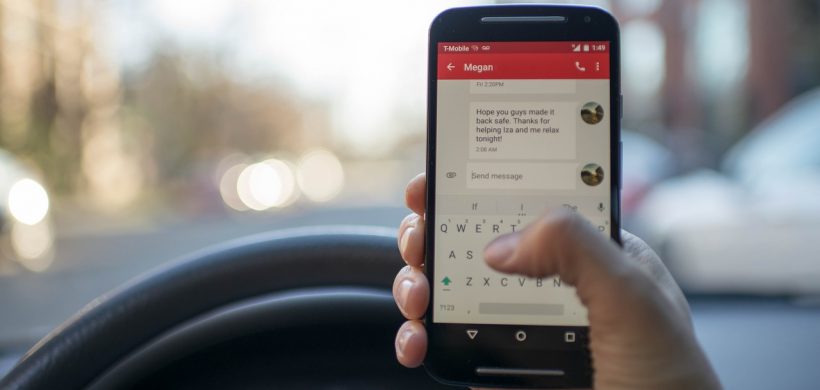Using a mobile phone while driving is illegal, and will result in minimum six penalty points and a minimum £200 fine. But what exactly does this offence constitute, and are there any exceptions?

WHAT DEVICES DOES THE LAW APPLY TO?
The term ‘mobile phone’ covers all types of cell phones and smartphones, and the relevant law applies specifically to hand-held devices. A device is ‘hand-held’ if it has to be held in the hand at some point in order to operate it. This includes but is not limited to making or receiving a call, sending and receiving voicemails, texts, looking at pictures or videos, accessing an app etc.
CHANGES TO THE LAW ON MARCH 25, 2022
The decision related to what constituted the use of a mobile phone was previously subject to some dispute. It was decided that unless a person was proved to be using the phone for the purpose of communicating with another person (calls, texts etc), it did not constitute using a mobile phone whilst driving*. However, the new changes to the law that have come into effect on March 25, 2022, will put an end to these disputes.
The new law expands the definition of the term ‘using’. Previously it only defined using the device for communication purposes. This list has now been expanded to include the following definitions:
- illuminating the screen
- checking the time
- checking notifications
- unlocking the device
- making, receiving or rejecting a telephone or internet-based call
- sending, receiving or uploading oral or written content
- sending, receiving or uploading a photo or video
- utilising the camera, video, or sound recording
- drafting any text
- accessing any stored data such as documents, books, audio files, photos, videos, films, playlists, notes or messages
- accessing an app
- accessing the internet
The new definitions make it clear, in no uncertain terms, that holding your device for any purpose is against the law whilst driving.
The law still applies if you’re stopped at traffic lights, queuing in traffic or supervising a learner driver.
CAN I STILL USE MY MOBILE PHONE AS A SAT NAV?
The new rules around using your phone as a sat nav will remain the same: you are only allowed to use your mobile phone as a sat nav if the phone is mounted in a hands-free holder.
Drivers should programme and start their route before they begin driving, as trying to set it while driving would amount to ‘using’ the mobile phone, and could lead to a conviction.
If you needed to change the route on your device you would need to pull over safely before doing so.
The use of a Bluetooth headset, voice command or a dashboard holder is still allowed so long as no contact is required with the device. Even so, the police can stop you if they think you’re not in control because you’re distracted, and you can be prosecuted.
WILL THERE BE EXEMPTIONS?
With the rise in contactless phone payments, a new exemption to using the mobile phone is introduced with the new law. A driver is allowed to use their mobile device to make a contactless payment at a payment terminal for goods or services. For this exemption to apply, the vehicle will have to be stationary, and the item being paid for must be provided at the same time or after the contactless payment is made. Such a transaction might include paying for a car park or drive-through coffee using a phone.
The only other exception to the rule is when a driver is using the mobile phone to call the police, fire, ambulance or another emergency service. However, there are a number of conditions that must be met for this to be used as a defence, including that it is in response to a genuine emergency, and that it is unsafe or impracticable to cease driving in order to make the call.
If it is practical for you to pull over, you should do so safely before using your device.
For further information on all motoring matters, visit our Motoring Services page.
*DPP v Barreto [2019] EWHC 2044 (Admin)
- Disciplinary Procedures for Pharmacists - May 15, 2018
- Disciplinary Procedures for Dentists - April 26, 2018
- Disciplinary Procedures for Solicitors - February 28, 2018


Leave a Reply
You must be logged in to post a comment.